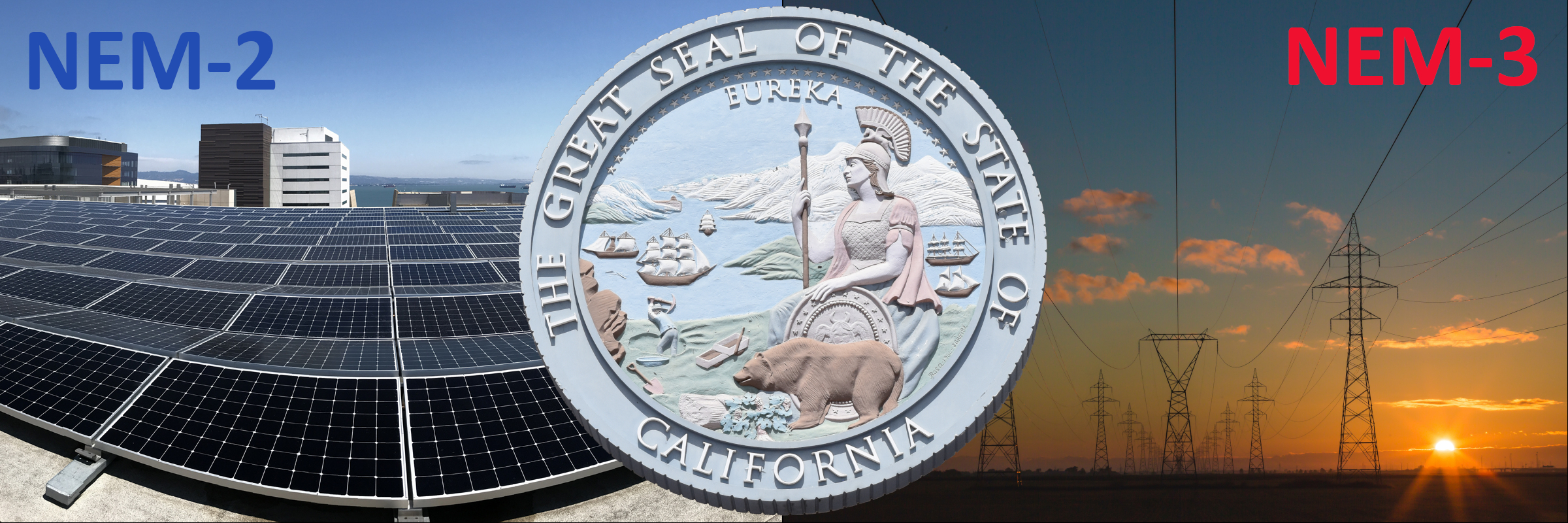
As a result of the current “NEM-3” hearings at the CPUC, Net Energy Metering (NEM) in California is likely to change dramatically in 2022. In our opinion, you should submit all commercial and agricultural PV interconnection applications to your utility as early as possible and no later than Dec 31, 2021. This will give you the best chance of retaining the full benefits of the current NEM-2 program for up to 20 years. The initial filing date, as well as the completeness and accuracy of your application will be critical in determining your NEM-2 eligibility. If your application is approved in time, you should be able to operate your PV system based on the current NEM-2 rules. Please note that the process for residential interconnection applications is different and even more restrictive.
Many of the crucial NEM-3 details have yet to be finalized, but we have been told that the new rules will not be retroactive prior to its adoption by the CPUC sometime after January 2022. However, the CPUC’s recent stance toward solar suggests that some or all of the NEM-2 benefits may not be available to those who submit their initial interconnection application between the January adoption and the date NEM-3 rules take effect. Regardless, all application issues must be corrected, and, no significant design changes will be accepted after submittal. Resubmitted applications may lose their place in line and could cost you NEM-2 eligibility.
California implemented NEM in 1995 to encourage citizens to self-generate power. NEM incentivized owners of grid-tied PV systems are allowed to sell excess electricity generated from their solar panels back to their utility on a 1:1 cost basis for every kilowatt-hour produced. PG&E customers who obtained permission to operate a solar PV system under 1 MW by December 15, 2016 are currently on NEM-2. This plan requires customers to pay a one-time application fee, modest monthly transmission and connection fees, and, switch to a time-of-use (TOU) rate plan. NEM-2 customers sell their power at slightly below retail prices in exchange for monthly credits which can be applied to both current and future bills. Any generation credits remaining at the end of each year are credited back to the customer at a lower wholesale rate.
NEM-3 will also require a TOU rate plan, and if the utilities get their way, it will introduce very high monthly fees and greatly reduce the value of the net generation solar credits that will be applied on a monthly basis, grossly undervaluing total solar energy production. The utility version of NEM-3 would triple the time required to pay off many solar systems and produce a negative return on investment.
On June 24, 2021, the CPUC voted unanimously in favor of Resolution 5150 to adopt the highly contested 2022 Avoided Cost Calculator (ACC). The software is used to evaluate the financial impact of distributed energy systems and calculate energy credits. CALSSA is challenging the CPUC’s reliance on the error-prone ACC and you can help fight back. Meanwhile, the investor-owned utilities (IOUs) continue to attack distributed solar, claiming wealthy solar adopters are benefiting from rate payer subsidies. This ironic and incredulous ploy comes from those who have long benefitted from the heavily subsidized fossil-fuel industry.
Instead of working with the rooftop solar industry, the IOUs want to eliminate all local solar and battery storage, charge all rate payers to build utility-scale solar and wind, then transmit the power long distances over new lines and charge all of the costs to ratepayers. To protect their shrinking market share, serve their shareholders, and preserve their mismanaged monopoly, the IOUs are willing to destroy distributed solar. If they succeed, California will be unable to meet its climate goals. The utilities alone simply cannot generate enough renewable power to get the state where it needs to go, especially on the accelerated timeline that we must achieve.
In July 2021, Local Solar For All summarized the findings of a utility-grid model that refutes the ACC calculations and the IOU’s claims. The summary is based on Vibrant Clean Energy’s state-of-the-art WIS:dom-P software developed by Dr. Christopher Clack. The study found that if California increases distributed solar to 65 GW paired with 60 GW of distributed battery storage by 2050, the power grid would be more resilient and outperform the utility-based generation model by 50 GW. This rooftop solar strategy would also create over 374,000 more jobs, increase energy equity in communities, reduce more CO2 emissions, and save rate payers $120 billion compared to the all-utility scale model!
Sun Light & Power urges you to finalize your commercial or agricultural PV project design and submit your interconnection application no later than Dec 31, 2021. This will maximize your chances of retaining NEM-2 and realizing the benefits for up to 20 years. Help us reach California emissions goals and protect vulnerable citizens with distributed rooftop solar. Join us and the overwhelming majority of California voters who want to maintain the California solar mandate as intended. Please remind Governor Newsom of his commitments to renewable energy by messaging him directly here.
Gary Gerber is Founder and CEO of Sun Light and Power
Seamas Brennan is Marketing Coordinator at Sun Light & Power